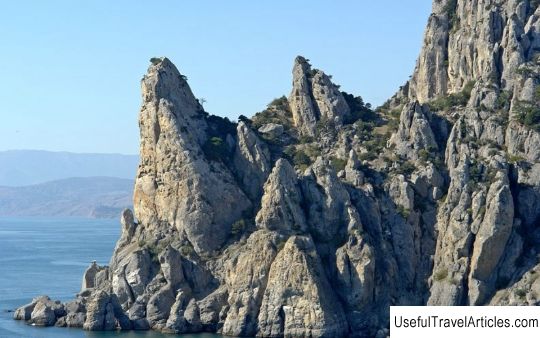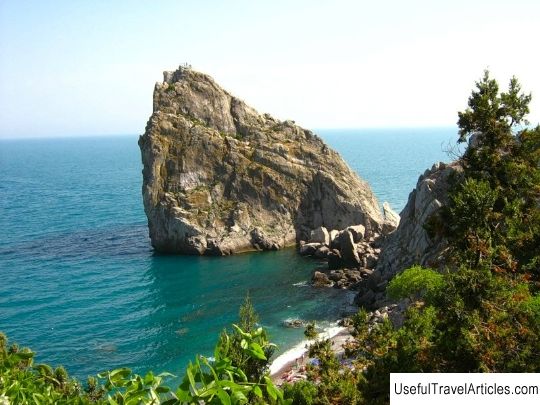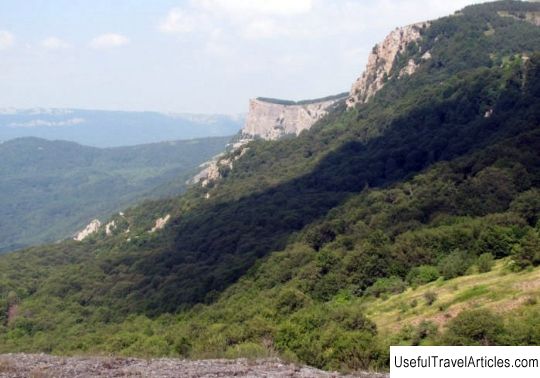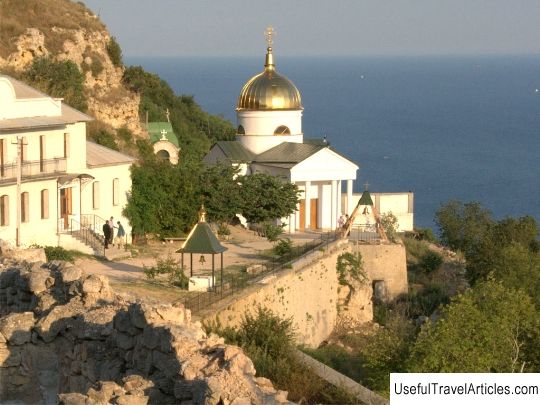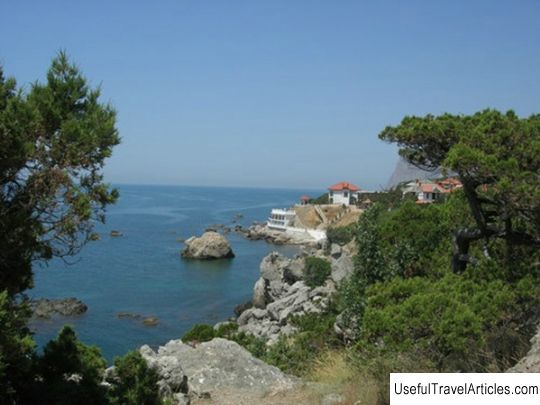Rock Iphigenia description and photo - Crimea: Coastal
Rating: 9,9/10 (2661 votes) 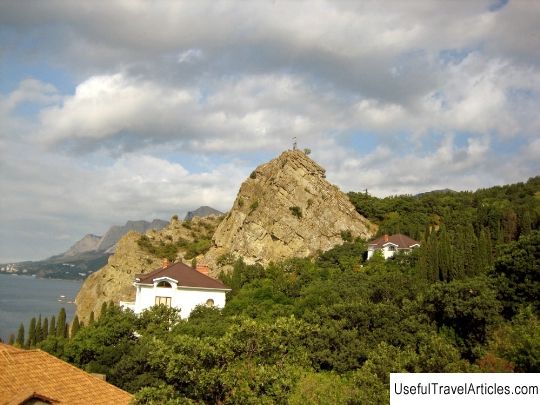
Rock of Iphigenia description and photo - Crimea: Beregovoe. Detailed information about the attraction. Description, photos and a map showing the nearest significant objects. Photo and descriptionThe Sarych-Kekeneiz mountain landscape on the western South Coast includes the Iphigenia rock. Height above sea level - one hundred and twenty meters. This is a unique array on the Crimean peninsula. In shape, it looks like a formidable fortress. This gave the name to the entire area. Nearby there is a boarding house "Castropol", formerly the Beregovoye was called Castropol. This word comes from the Greek "castro", which means "fortress". The unusual name of the mountain has its origins in ancient myth. The legend of Iphigenia was used by Euripides in his tragedy, and it was also reflected in the works of other writers, artists and composers. The natural landscape of these places is unique. The rock rises above the sea, over time it sagged a little and today it is solid, fortress in the relief of the area. This mountain has a special charm, it hides many secrets, and this attracts scientists and numerous tourists here. The ancient massif stretches along the coast for almost five hundred meters. The tuffs of keratospilitic and spilite porphyrites, which are quite rare for Crimea, form the basis of the rock. These grayish-green formations date back to the Middle Jurassic era. In the central part of the massif a gorge appeared, deep and with steep slopes. In the upper part of the gorge, on the surface, sedimentary deposits are noticeable, most likely of Tauride origin. On the western side of the massif, many stone peaks are visible. Surprisingly, there is still vegetation on the bare rock: dull-leaved pistachio trees grow at the top. This tree also bears other names: kevoy tree, wild pistachio, turpentine tree. It is used to make keva - a resin for making gutta-percha. Pistachio trees have a fixing function, protect the slopes from destruction. In May-June, the slopes are transformed. All plants bloom. About fifty plant species live on this massif. Pink flowers grow here, they cover the cistus. Vyazel and jasmine play with golden highlights. You can see asphodeline flowers and small buds of fumana and borachka, they also glow with a yellow-golden color. White and purple dubrovnik gleams, Marshall carnations and cornflowers bloom beautifully, and purple thyme grows everywhere. On a hot day over the cliff, you can hear the discordant singing of cicadas. Since 1947, the rock has been considered a natural monument, and in 1997 this was confirmed.      We also recommend reading Reggia di Caserta palace description and photos - Italy: Caserta Topic: Rock Iphigenia description and photo - Crimea: Coastal. |
